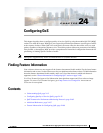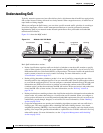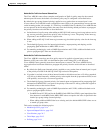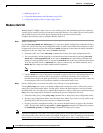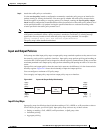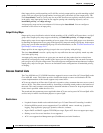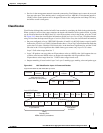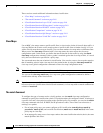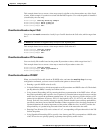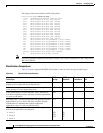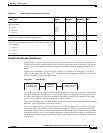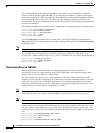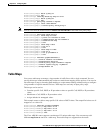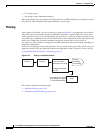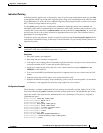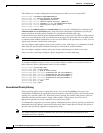
24-9
Cisco ASR 901 Series Aggregation Services Router Software Configuration Guide
OL-23826-09
Chapter 24 Configuring QoS
Understanding QoS
This example shows how to create a class map example to define a class that matches any of the listed
criteria. In this example, if a packet is received with the DSCP equal to 32 or a 40, the packet is identified
(classified) by the class map.
Router(config)# class-map match-any example
Router(config-cmap)# match ip dscp 32
Router(config-cmap)# match ip dscp 40
Router(config-cmap)# exit
Classification Based on Layer 2 CoS
You can use the match command to classify Layer 2 traffic based on the CoS value, which ranges from
0 to 7.
Note A match cos command is supported only on Layer 2 802.1Q trunk ports.
This example shows how to create a class map to match a CoS value of 5:
Router(config)# class-map premium
Router(config-cmap)# match cos 5
Router(config-cmap)# exit
Classification Based on IP Precedence
You can classify IPv4 traffic based on the packet IP precedence values, which range from 0 to 7.
This example shows how to create a class map to match an IP precedence value of 4:
Router(config)# class-map sample
Router(config-cmap)# match ip precedence 4
Router(config-cmap)# exit
Classification Based on IP DSCP
When you classify IPv4 traffic based on IP DSCP value, and enter the match ip dscp class-map
configuration command, you have several classification options to choose from:
• Entering a specific DSCP value (0 to 63).
• Using the Default service, which corresponds to an IP precedence and DSCP value of 0. The default
per-hop behavior (PHB) is usually best-effort service.
• Using Assured Forwarding (AF) by entering the binary representation of the DSCP value. AF sets
the relative probability that a specific class of packets is forwarded when congestion occurs and the
traffic does not exceed the maximum permitted rate. AF per-hop behavior provides delivery of IP
packets in four different AF classes: AF11-13 (the highest), AF21-23, AF31-33, and AF41-43 (the
lowest). Each AF class could be allocated a specific amount of buffer space and drop probabilities,
specified by the binary form of the DSCP number. When congestion occurs, the drop precedence of
a packet determines the relative importance of the packet within the class. An AF41 provides the
best probability of a packet being forwarded from one end of the network to the other.
• Entering Class Selector (CS) service values of 1 to 7, corresponding to IP precedence bits in the ToS
field of the packet.
• Using Expedited Forwarding (EF) to specify a low-latency path. This corresponds to a DSCP value
of 46. EF services use priority queuing to preempt lower priority traffic classes.



